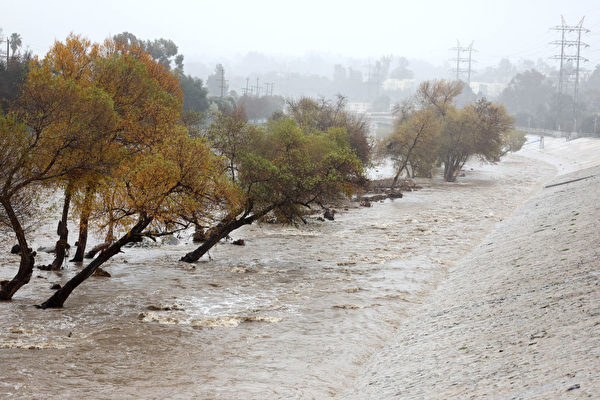In the next few months, the US West Coast may be facing a wet and rainy winter.
According to AccuWeather’s report this week, moisture in the Pacific Northwest is expected to increase starting in November and December. Senior meteorologist Paul Pastelok predicts that atmospheric rivers from the Pacific and winter storms will first impact the Northwest US and Northern California in December before moving across the Rockies. Major changes are expected to occur at the beginning of 2025.
Pastelok mentioned that the warmer-than-average water temperatures in the North Pacific may alter the storm paths along the West Coast, potentially affecting the entire country. Mid-winter storms may shift southward, impacting Central and Southern California and pushing further inland.
January could become the wettest month of winter for areas like Los Angeles, San Diego, and the Inland Empire. By February, storms are expected to once again affect Northern California, similar to the winter of 2022-23.
The La Niña phenomenon is also an influencing factor. This climate phenomenon refers to periodic cooling of the sea surface temperatures in the central and eastern equatorial Pacific every 3-5 years, lasting about 1-3 years, significantly affecting North America as a whole. La Niña is predicted to weaken this winter, influencing many areas on the US West Coast through over 40 atmospheric rivers.
At the beginning of this month, certain regions in the western US saw record-high temperatures, resembling summer weather, but the heatwave is expected to subside by mid-month. Rainfall frequency is projected to gradually increase in November and December, bringing snow to mountain areas. Thanksgiving and Christmas may be ideal times for skiing.
Last winter was the warmest on record in the US. The upcoming winter is expected to have Gulf of Mexico water temperatures above historical averages, leading to milder conditions in the Central and Eastern US. However, multiple rounds of cold air masses are expected to periodically affect the entire country, increasing the likelihood of snowfall.
In February next year, a southward polar vortex is likely to bring bitterly cold winds to the US East Coast, resulting in higher snowfall amounts in the Northeast and Midwest regions compared to last year. Cities like Chicago and Buffalo may see total snowfall exceeding historical averages.
According to the Winter Outlook report issued by the National Oceanic and Atmospheric Administration (NOAA) in September, there’s a 74% chance of La Niña appearing across the US. The winter of 2023-24 was dominated by the El Niño phenomenon.
NOAA’s latest prediction on Thursday (the 17th) stated that due to the La Niña event expected to form at the end of November, much of the southern US, from Southern California to South Carolina, are likely to experience below-average rainfall and snowfall from December to February, with higher temperatures. Drought may develop in the Southwest US.

